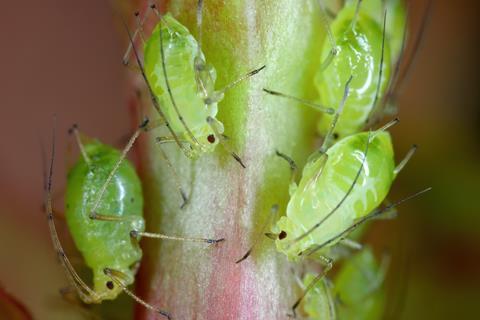Aphids move from west to east but rarely in the opposite direction, finds groundbreaking research, meaning growers may need to rethink lettuce crop protection

Aphids attacking lettuce fields in England are showing surprising regional patterns that have major implications for the future of crop protections, new research has revealed.
Populations of the destructive currant-lettuce aphid, Nasonovia ribisnigr, are divided sharply between the east and west of the country, according to new analysis from the Rothamsted-based National Insect Survey and the University of Warwick’s Crop Centre.
The findings, based on nearly two decades of genetic sampling, suggests that the pest’s movements are strongly tied to lettuce-growing regions and may not spread as widely as previously thought.
“The clear geographic divide we see has major implications for how we monitor and control N. ribisnigri,” said study author Dion Garrett, warning that growers will need region-specific approaches to tackle the pest in future.
Researchers analysed insects collected from ten sites between 2003 and 2020, and found that that while aphids migrate from the west into eastern lettuce fields, they rarely move in the opposite direction.
They also found that the insects are highly inbred and mostly reproduce in cycles tied to the seasons, a factor that may help explain their long-term persistence.
The pattern could be linked to the insect’s relationship with its winter host, blackcurrant and related Ribes plants, as well as outdoor lettuce as the pest’s summer host.
It comes at a critical time for growers as traditional defences against the pest, such as resistant lettuce varieties, have started to fail in recent years, leaving few effective alternative options for control.
Despite this, populations of N. ribisnigri appear to have remained relatively stable, even as warmer temperatures and shifting weather patterns create more favourable conditions for the aphid.



